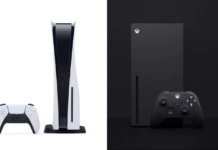
The Halo: Reach multiplayer Beta test, held last March, was Bungie’s second such experiment. The first one was for Halo 3, and it required players to purchase Crackdown, a totally unrelated title, in order to play. Reach‘s Beta, on the other hand, only required players to own ODST, which most Halo fans did anyway.
This is important, since the point of the multiplayer Betas is for Bungie to gather information about the game from as many players as possible. With the Reach Beta, that was a lot of players.
“We had a little over 2.7 million unique people who played this Beta, and that was only in a three week span,” Brian Jarrard, Bungie’s Community Director, told us last week in San Francisco. “That was incredibly important and valuable for us.”
So what did they learn from all these players?
“On the gameplay and design side, we’ve done a whole bunch of stuff directly as a result of the Beta, just to kind of fine tune and turn some knobs and tighten some things up,” Jarrard said. “I think the single biggest change that most fans will find, besides the obvious sort of bug tweaks and things that were just in progress at that time, is the base speed of the game has been increased a little bit more closer to what it was in Halo 3.”
ÂÂ

In Halo 3, players took the role of the Master Chief, a Spartan II super soldier who could move significantly faster than most humans. In ODST, however, they played as the Rookie, an Orbital Drop Shock Trooper who, while also badass, couldn’t move quite as fast as the Chief. In Reach, Bungie has sought to strike a balance between the two.
“It’s always been our intent to make the Spartans of Noble Team… a little bit different, a little closer to ODST, I guess, if you will, than Halo 3,” Jarrard said. “These aren’t the single Spartan super soldiers like Master Chief. We want these guys to be a little more vulnerable, a little more humanlike, but the overwhelming feedback from the Beta was the game was too slow, people didn’t think it felt like Halo.
“They’d gone straight from playing 5,000 games of Halo 3 to playing this next game the next day, and there was a massive – it was very jarring for them, and as a result we’ve kind of gone in and the design team has tweaked some of those things, and I think it will feel a lot more familiar now, but still be a little bit different, which I think in the end is going to be better for everyone.”
Their motivation? To keep fans playing for as long as possible.
“We want to make a game that people will play online for years,” Jarrard said. “And that means it has to be solid, has to be balanced, it has to be fun, and it just can’t be full of glitches and exploits and issues that will turn people away.”
From what I saw of the game, which was everything, I’m almost certain they’ve succeeded. Check out both parts of our full video interview here and here, and the rest of our hands-on coverage with the game, as well.










